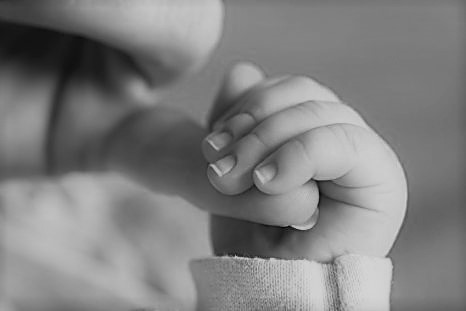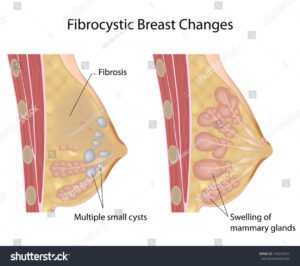Improving maternal and newborn health is key to achieving the targets of the sustainable development goal 3, which is about good health and well-being. Adequately caring for mothers and their newborns will ultimately not only reduce both maternal and perinatal mortality and morbidity but also ensure that the health of the people has improved for the better.
It is worth noting that 17,000 fewer children die every day than in 1990, but more than five million children still die before their fifth birthday every year. Measles vaccines have averted approximately 15.6 million deaths. The proportion of mothers who die due to childbirth is still 14 times higher in developing countries when compared to developed countries. By 2018, 36.9 million people were living with HIV, many of whom were women and children. Since the start of the AIDS epidemic, 35.4 million people have died from illnesses related to the disease (WHO,2020). All these facts and figures expound on what it means toward improving the health of the population, especially maternal and child health.
There are several interventions from the World Health Organization and its partners that they recommend to improve maternal and newborn health. Today’s article summarizes such interventions which we shall group into routine care (offered to all women and babies), additional care (for women and babies with moderately severe diseases and complications), and specialized care (for women and babies with severe illnesses and complications). Let’s get started.
We categorize the interventions as pregnancy care, childbirth, care, postnatal maternal care, newborn care, and postnatal newborn care.
Pregnancy care
It requires a pregnant woman to have at least eight antenatal care contacts with the health care providers.
Routine care involves initial confirmation of pregnancy, followed by monitoring of pregnancy progress and assessment of maternal and fetal well-being. Assess for the presence of anaemia, hypertension, bleeding, malpresentation, and multiple gestations. Other complaints should have the appropriate responses. Tetanus immunizations accomplished, and prevention of anaemia through iron and folic acid supplementation implemented. All women should receive information and counselling about self-care at home, nutrition, safer sex, breastfeeding, family planning, and a healthy lifestyle. Birth planning, advice on danger signs, and emergency preparedness are vital aspects of routine care, and so are recording, reporting and testing for both HIV and syphilis.
Additional care involves the treatment of mild to moderate pregnancy complications like mild to moderate anaemia, urinary tract infection, and vaginal infection. Post-abortion care and family planning are very vital, so is the pre-referral treatment of severe complications like pre-eclampsia, eclampsia, bleeding, infections and complicated abortion. All women with special needs like adolescents, women living with violence should be supported. Adequately treat all women with syphilis along with their partners.
Specialized care involves the treatment of severe pregnancy complications like severe anaemia, severe pre-eclampsia, eclampsia, bleeding, infections, and complications related to abortions.
Childbirth care
Childbirth care entails labour, delivery and immediate puerperium.
Routine care during labour and delivery begins with the labour diagnosis followed by the detection of malpresentation, prolonged obstructed labour, hypertension, bleeding, and infection. Timely delivery and immediate care of the newborn baby, as well as, initiation of breastfeeding within 1 hour are paramount to both the mother and her baby’s survival. Newborn resuscitation when the need arises should be thorough and so should active management of the third stage of labour. Immediate postnatal care of the mother involves the treatment of moderate post-hemorrhagic anaemia, informing and counselling the mother on home self-care, nutrition, safe sex, breast care, and family planning. Never forget postnatal care planning, advice on danger signs and emergency preparedness. At the end of all these interventions, recording and reporting complete the puzzle.
Additional care includes treatment of abnormalities and complications like prolonged labour, vacuum extraction, breech presentation, episiotomy, repair of genital tears, and manual removal of the placenta.
For obstructed and preterm labour, fetal distress, severe peri- and post-partum haemorrhage, provide pre-referral care. And if birth is imminent, emergency management should be made available and easily accessible.
Specialized care captures the treatment of severe complications in childbirth and the immediate puerperal period, including cesarean deliveries, blood transfusion, and hysterectomy. And obstructed labour, malpresentation, eclampsia, severe infection, and bleeding. Induction and augmentation of labour are paramount wherever needed.
Postnatal care (up to 6 weeks)
Start with an assessment of maternal well-being, prevention, and detection of complications like bleeding, infections, and anaemia, followed by prevention of anaemia through folic and iron supplementation. Provide information and counselling on nutrition, safe sex, and family planning. Provide postnatal care planning, advice on danger signs, and emergency preparedness should, as well as the provision of contraceptive methods.
Additional care entails treatment of some problems like mild to moderate anaemia and mild puerperal depression, and pre-referral treatment of severe puerperal bleeding and puerperal sepsis.
Specifically, attend to severe anaemia, severe PPH, severe puerperal infections, and depression. Do not miss female sterilization whenever the need surfaces.
Read this article: Dolutegravir use in pregnancy: The benefits outweigh the risks – if any.
Essential newborn care (birth and immediate postnatal)
Breastfeeding for all newborns must be promoted, protected and supported. Monitor and assess newborn well-being, and be prompt in detecting complications like breathing, infections, prematurity, low birth weight, and malformations. Actively prevent and control infectious illnesses. Eye care with tetracycline eye ointment is paramount. Provide information and counselling on home care, breastfeeding, and hygiene. We cannot overemphasize immunization. Postnatal care planning, advice on danger signs and emergency preparedness are all part of the routines.
Additional care covers preterm, low birth weight or twin care and support for breastfeeding, kangaroo mother care follow-up, local infection treatment, and pre-referral management of infants with complications. Supporting the parents during a perinatal death is very paramount.
Specialized care caters to the continued management of severe newborn problems like preterm birth, breathing difficulty, sepsis, severe birth asphyxia and trauma, severe jaundice and kangaroo mother care. Promptly manage all correctable malformations should.
Essential Postnatal newborn care (visit at/from home)
Assess the infant well-being should be. It should cover the pattern and adequacy of breastfeeding. Detect complications and respond to maternal concerns. Continue providing information and counselling and schedule additional follow-up visits as it may necessitate specifically for all high-risk infants.
Management of feeding difficulties and any convulsions takes precedence, and so should support the family in case of perinatal death.
Attend to all severe newborn problems should be attended: sepsis, jaundice, and failure to thrive.
In a nutshell, any health care centre that manages to accomplish these interventions as recommended by WHO may as well forget about all the preventable maternal and perinatal deaths, and we can all achieve this. Remember maternal mortality ratio should be below 70 for every 100,000 live births globally by the year 2030, according to SDG 3.
Thanks for reading.




